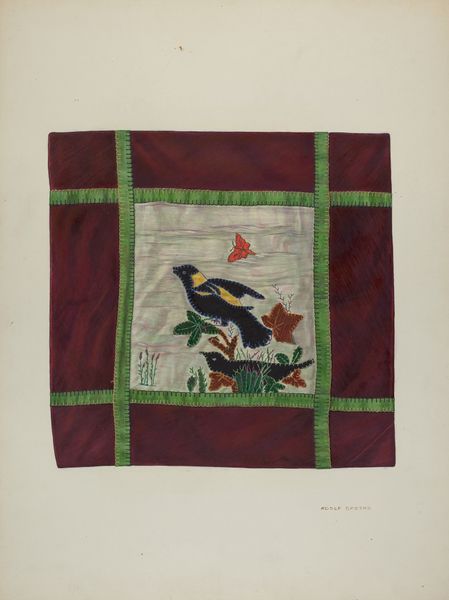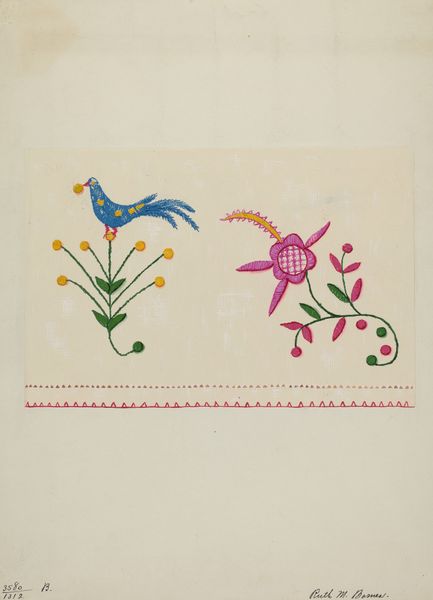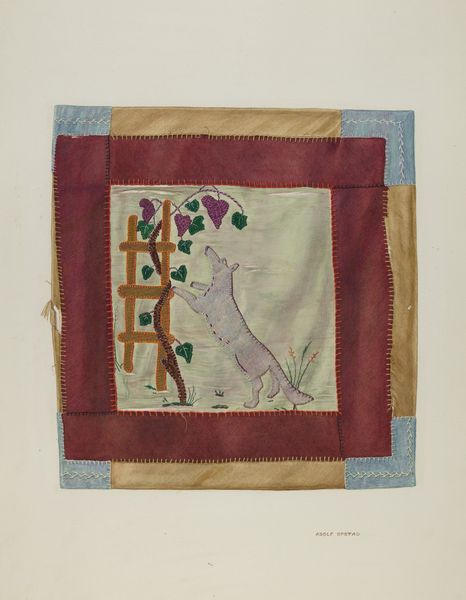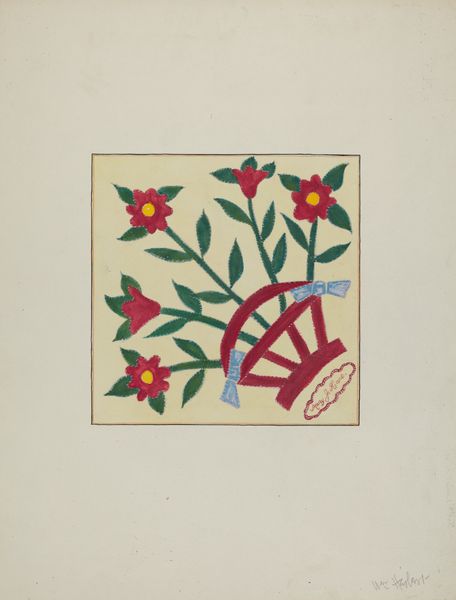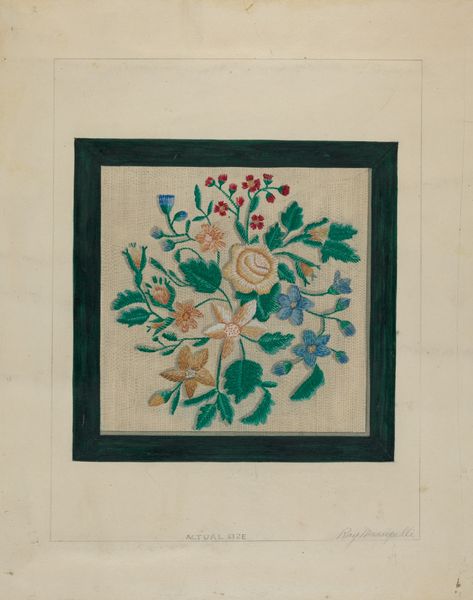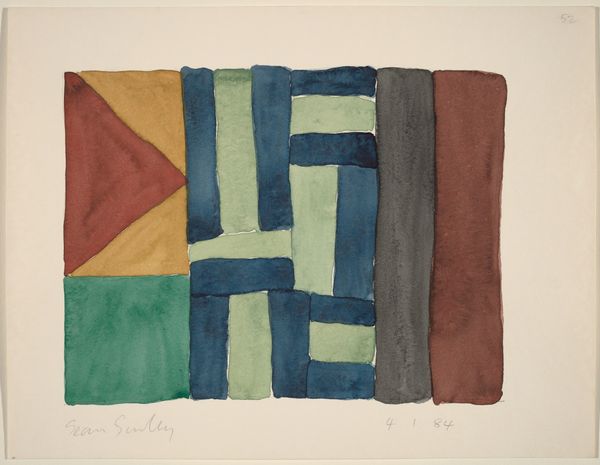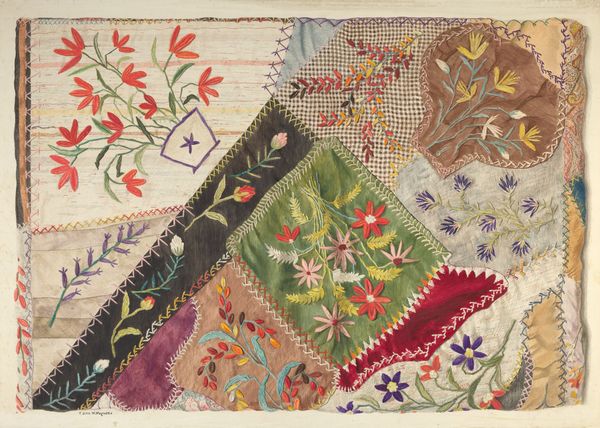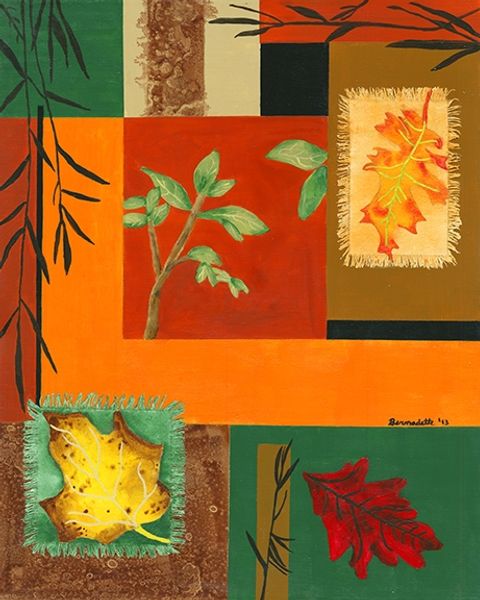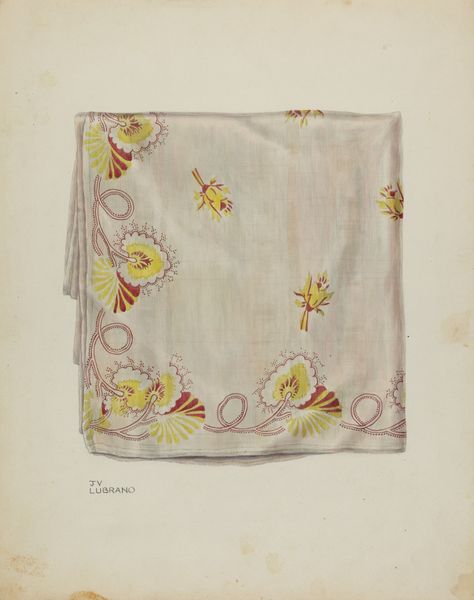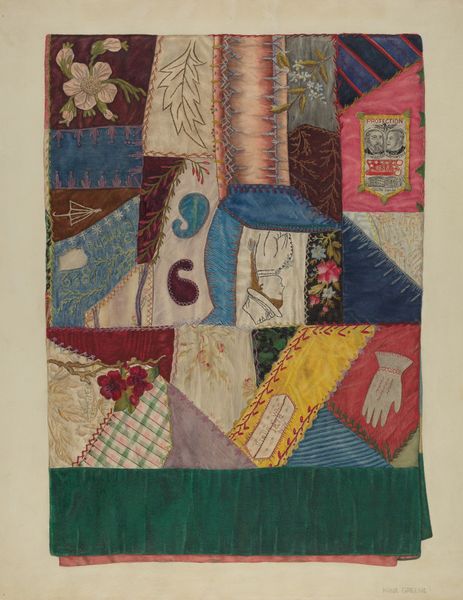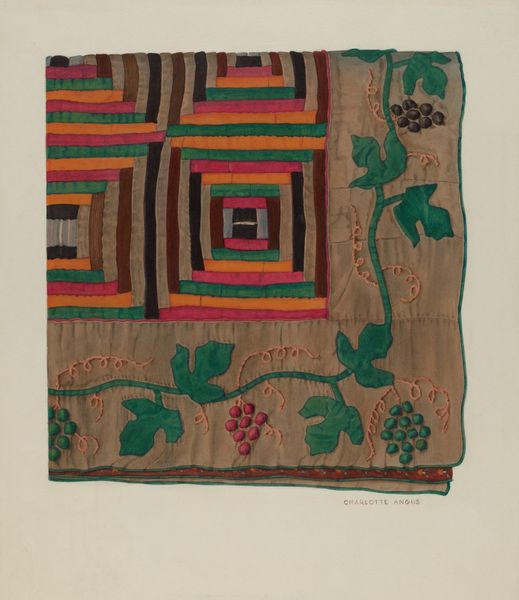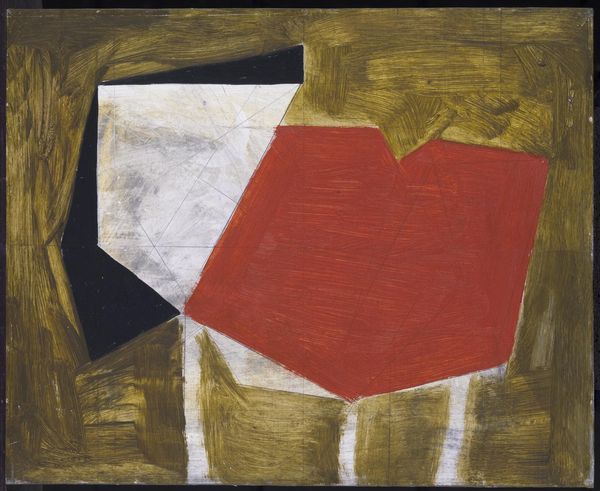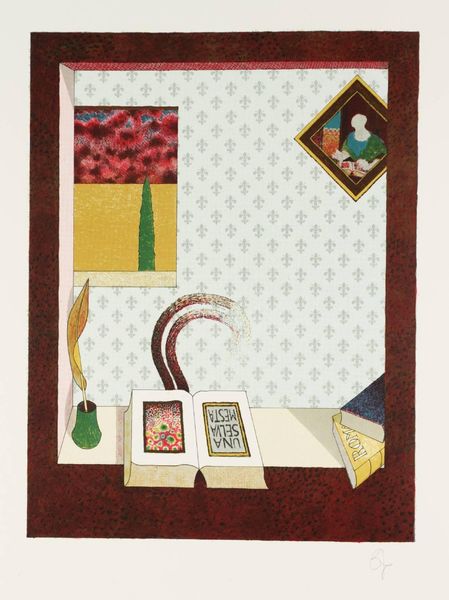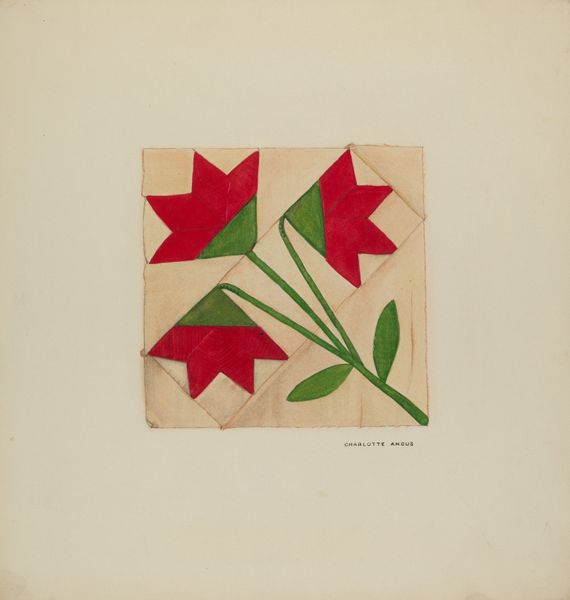
painting
#
painting
#
decorative art
#
watercolor
Dimensions: overall: 61.1 x 45.9 cm (24 1/16 x 18 1/16 in.) Original IAD Object: 12 1/2" long; 13" wide
Copyright: National Gallery of Art: CC0 1.0
Curator: Let’s discuss this vibrant “Applique Coverlet (Detail)” from 1941, crafted by Adolph Opstad. It’s a striking example of folk-art, combining textiles and watercolor in its rendering. Editor: My immediate impression is one of folksy charm. The contrasting red and green hearts dangling from what appears to be a stitched branch are incredibly disarming, as are the blooms scattered around the composition’s corner. Curator: Indeed. Note the artist's intentional play with geometric forms – the square within a square creates a distinct sense of visual layering and spatial complexity. Semiotically, we might consider the red and green, along with those hearts: Love versus life, the eternal dichotomy, as filtered through an vernacular lens. Editor: The cultural context here is important. Coverlets like this were traditionally collaborative works, expressions of community and domestic artistry. Its aesthetic reminds us how daily life became a stage of art during the American regionalism. These objects were both functional and deeply symbolic, expressing community values through their design. Curator: Precisely! Look closely at how Opstad employs line, especially within that small interior panel, he emphasizes its handmade, deliberately imperfect texture by showing all stitches that are very closely placed together. Those decisions add warmth and character but also speak to its function beyond simple domestic adornment. Editor: The medium further complicates our understanding of folk art as “naive”. Collage and the way Opstad assembles its shapes reminds me of pop-art, maybe we could view folk practices as resistance against mainstream arts? Or could this speak to some larger trend during the WW2 period? Curator: Possibly both? And maybe, most significantly, in pieces like these we uncover traces of deeply encoded, generational patterns that give fibre and textile traditions their power. The decorative style employed elevates a supposedly banal subject into an object that demands observation, both technical and symbolic. Editor: Right, and studying this prompts to recognize how “minor” genres become rich and powerful articulations of culture and experience through craft practices! The texture, forms, and how history speaks to this! Curator: Yes. Thank you. Editor: Indeed. Thank you, this was most useful.
Comments
No comments
Be the first to comment and join the conversation on the ultimate creative platform.
